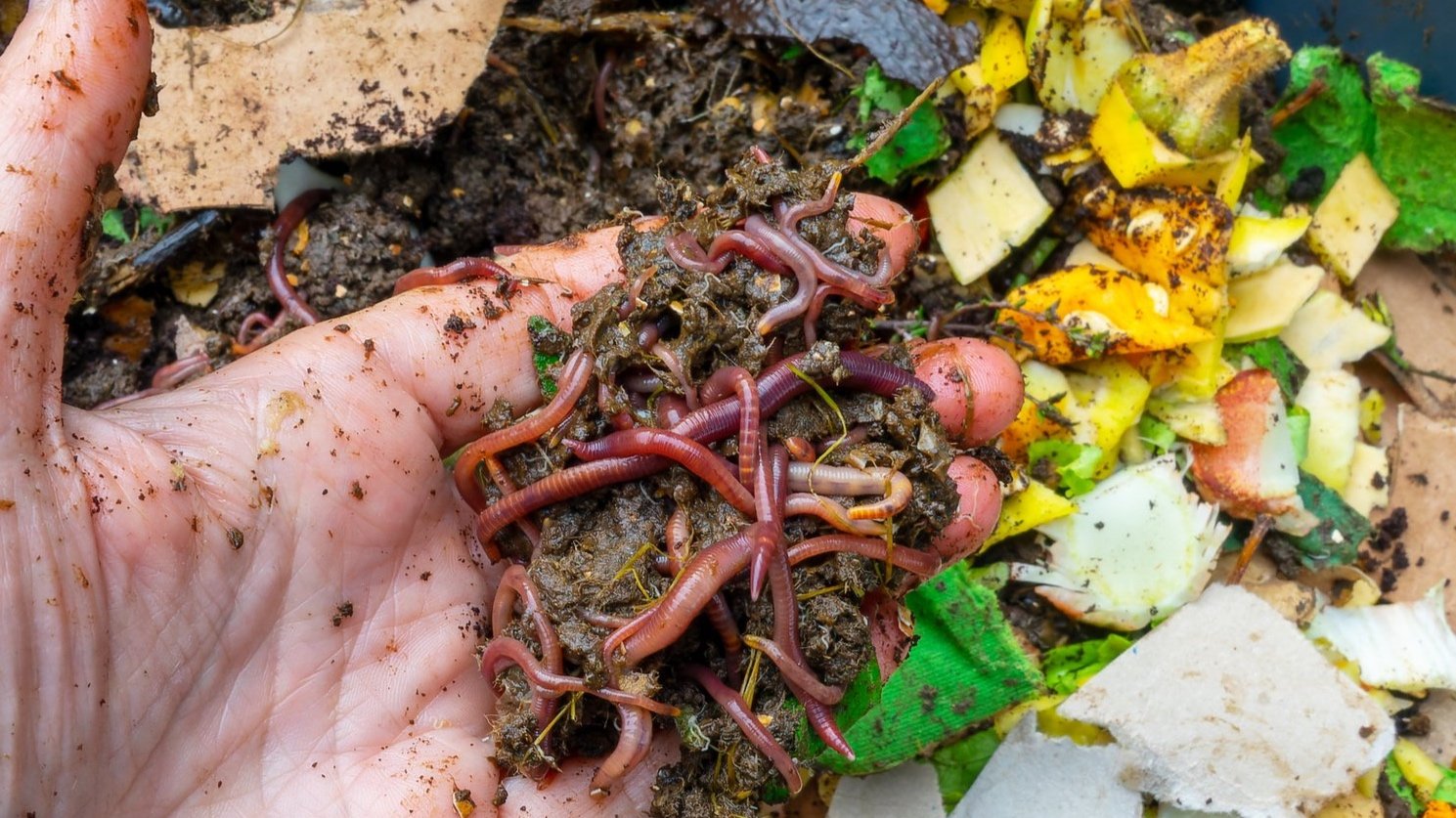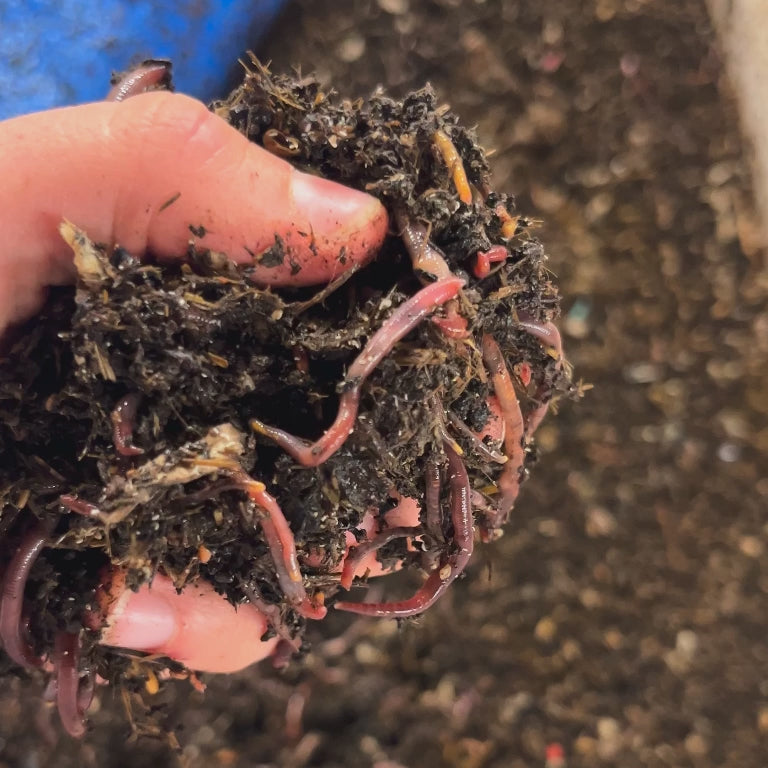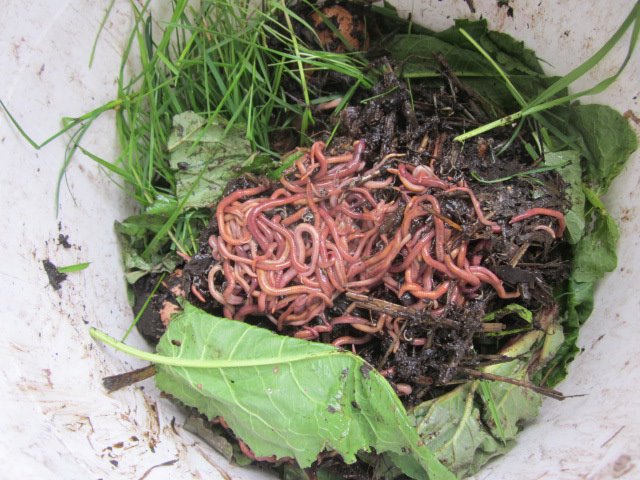Discovering the Devices of Red Wiggler Composting: A Comprehensive Overview to the Process and Its Positive Effect On Sustainable Horticulture Practices
The complex mechanisms of red wiggler composting, utilizing the distinct physiology of Eisenia fetida, offer an engaging avenue for improving lasting horticulture practices. As metropolitan gardening gains grip, recognizing the subtleties of this composting method comes to be progressively relevant.
Comprehending Red Wigglers
Red wigglers, scientifically referred to as Eisenia fetida, are a species of earthworm very concerned for their performance in composting organic waste. These worms grow in nutrient-rich atmospheres, specifically in rotting natural matter, making them suitable for vermicomposting systems - Red Wiggler Composting. Characterized by their reddish-brown pigmentation and fractional bodies, red wigglers are smaller than typical earthworms, typically measuring in between 3 to four inches in size
Their one-of-a-kind physiological qualities enhance their composting abilities; as an example, they have a high reproductive rate, enabling populaces to increase rapidly under suitable conditions. Red wigglers take in natural product, breaking it down with their digestive system systems, which results in nutrient-rich castings that function as an exceptional natural fertilizer. Their voracious hunger enables them to refine big quantities of food waste successfully, considerably minimizing garbage dump payments.
In enhancement to their composting expertise, red wigglers play an essential duty in dirt wellness. Red Wiggler Composting. They freshen the dirt and promote the disintegration of natural issue, more enriching the soil ecosystem. Understanding the qualities and ecological benefits of red wigglers is important for anybody wanting to execute sustainable horticulture techniques via efficient composting techniques
The Composting Process
The composting procedure entails damaging down organic materials right into nutrient-rich garden compost, a task that red wigglers excel at as a result of their specialized digestive system systems. These worms eat food scraps, lawn waste, and other raw material, transforming them right into useful compost through a collection of chemical and biological procedures.
Initially, the raw material is blended with bed linens products such as shredded paper or dried fallen leaves, producing an optimal setting for the worms. As the red wigglers consume this mix, they simplify via their digestive tract, where microorganisms better disintegrate the material. This procedure generates warm, promoting microbial activity, which increases decay.

Advantages of Red Wiggler Composting
Eco-conscious individuals and lots of garden enthusiasts acknowledge the countless advantages of red wiggler composting, making it a preferred selection for reliable waste monitoring. Among the main advantages is its ability to considerably decrease organic waste in land fills - Red Wiggler Composting. Red wigglers successfully damage down kitchen area scraps and other eco-friendly products, transforming them into nutrient-rich vermicompost that improves soil health
Moreover, red wiggler composting boosts soil structure and fertility. The resulting vermicompost is including valuable microbes, which promote plant development and enhance nutrient retention. you could look here This all-natural fertilizer not just supports lasting gardening practices yet also lowers dependence on chemical fertilizers, cultivating a healthier community.
In addition, red wiggler composting is a space-efficient technique, making it perfect for city gardeners with minimal area. The process can be carried out indoors or outdoors, enabling year-round composting despite environment problems. Red wigglers are low-maintenance organisms that call for minimal care, making them obtainable for beginner garden enthusiasts.
Basically, the benefits of red wiggler composting prolong past waste reduction; they contribute to healthier dirts, lasting gardening practices, and environmental stewardship, placing it as a valuable practice in modern gardening.
Ideal Practices for Composting
For successful red wiggler composting, sticking to finest practices is crucial to optimize performance and guarantee a productive atmosphere for these worms. why not check here This balance promotes optimum decay and boosts the worms' health and wellness.
Following, screen dampness levels, intending for a damp, sponge-like uniformity. Overly damp problems can result in anaerobic disintegration, while excessive dry skin might impede worm task. Additionally, make sure correct aeration by turning the garden compost routinely, which aids prevent compaction and permits ample oxygen flow.
Temperature is one more critical element. Preserve a variety of 55 ° F to 77 ° F(13 ° C to 25 ° C) to advertise worm activity and microbial growth. Stay clear of presenting meat, milk, and oily foods, as these can attract insects and produce odors.
Enhancing Sustainable Horticulture
Lasting horticulture symbolizes an all natural strategy that harmonizes eco-friendly principles with functional horticulture methods. additional hints By integrating approaches such as red wiggler composting, garden enthusiasts can significantly enhance their practices, fostering a more resilient ecosystem. Red wigglers, renowned for their effective disintegration capacities, transform natural waste right into nutrient-rich compost, thus improving the dirt without depending on chemical plant foods.
Applying sustainable gardening techniques, such as plant turning, buddy planting, and mulching, more enhances the benefits of composting. These practices not just improve dirt structure and fertility but additionally advertise biodiversity, drawing in useful insects and microorganisms that add to plant wellness. In addition, using native plants can lower water usage and minimize upkeep, lining up with water preservation initiatives.

Conclusion
To conclude, red wiggler composting stands for a vital method for enhancing lasting horticulture methods. The effective digestion of natural waste by Eisenia fetida not just creates nutrient-rich vermicompost but likewise cultivates better soil wellness and structure. By advertising cardio decay, this strategy reduces smells and waste while minimizing dependence on chemical plant foods. Ultimately, the adoption of red wiggler composting can dramatically add to environmentally friendly horticulture, profiting both city and novice garden enthusiasts in their cultivation efforts.
The complex systems of red wiggler composting, making use of the special physiology of Eisenia fetida, provide an engaging method for boosting lasting gardening practices. Understanding the attributes and eco-friendly benefits of red wigglers is necessary for anyone looking to implement lasting gardening techniques via effective composting techniques.

In verdict, red wiggler composting represents an important approach for enhancing lasting horticulture techniques. Eventually, the fostering of red wiggler composting can significantly contribute to environmentally friendly gardening, benefitting both metropolitan and newbie garden enthusiasts in their growing efforts.
Comments on “The Ultimate Red Wiggler Composting Checklist for Effective Vermiculture”